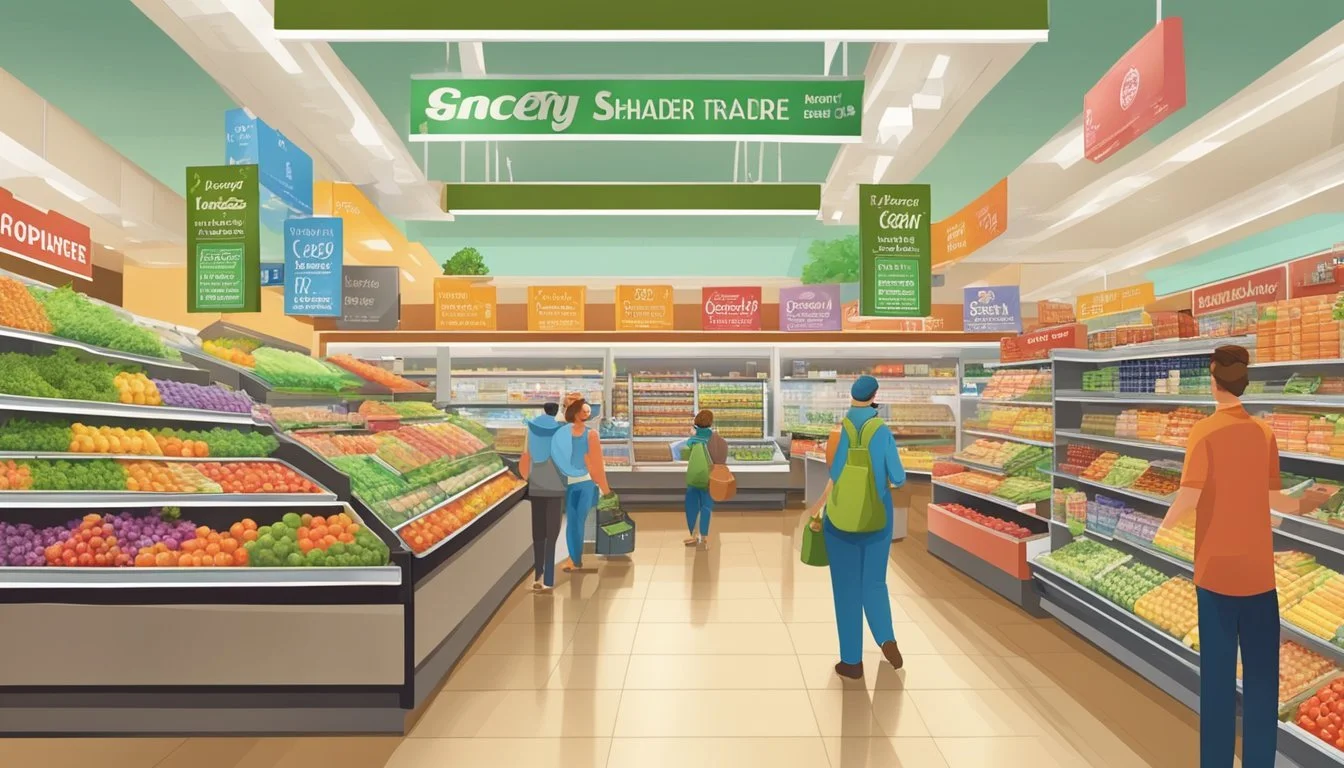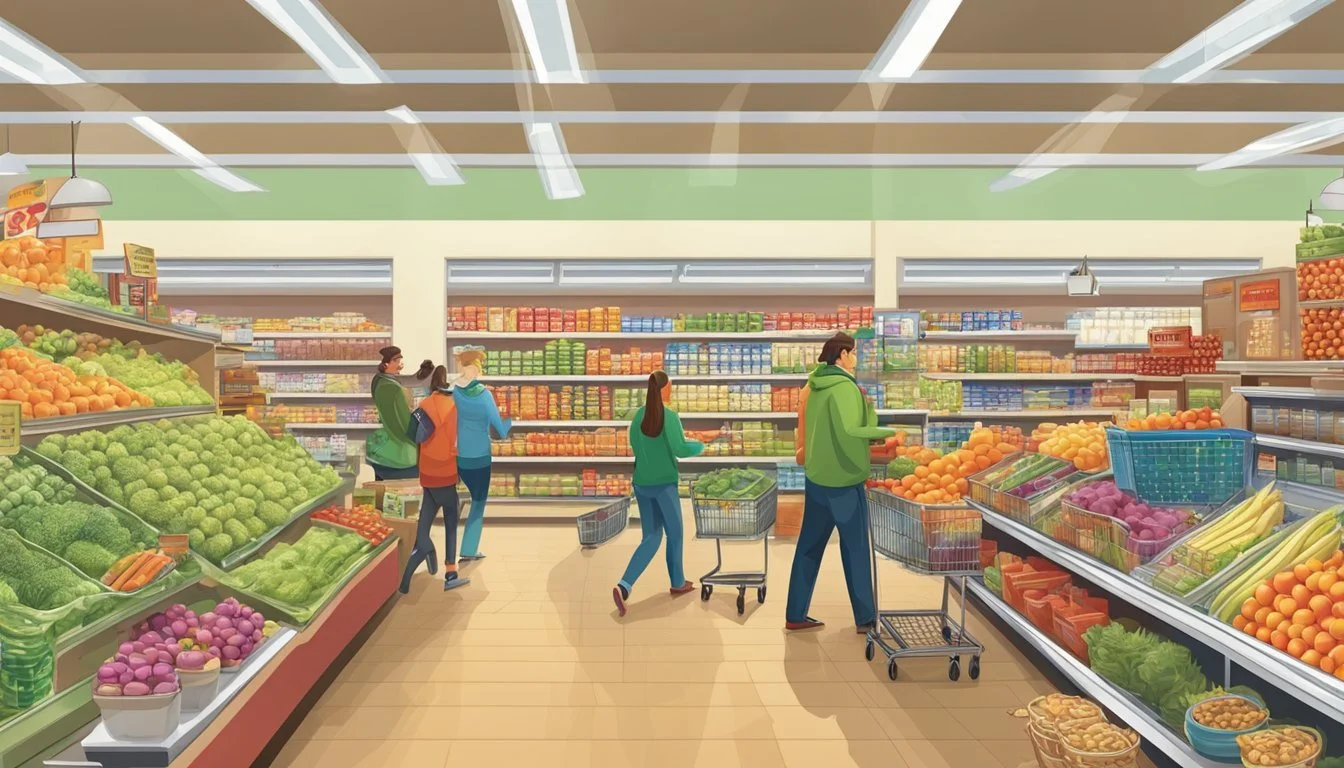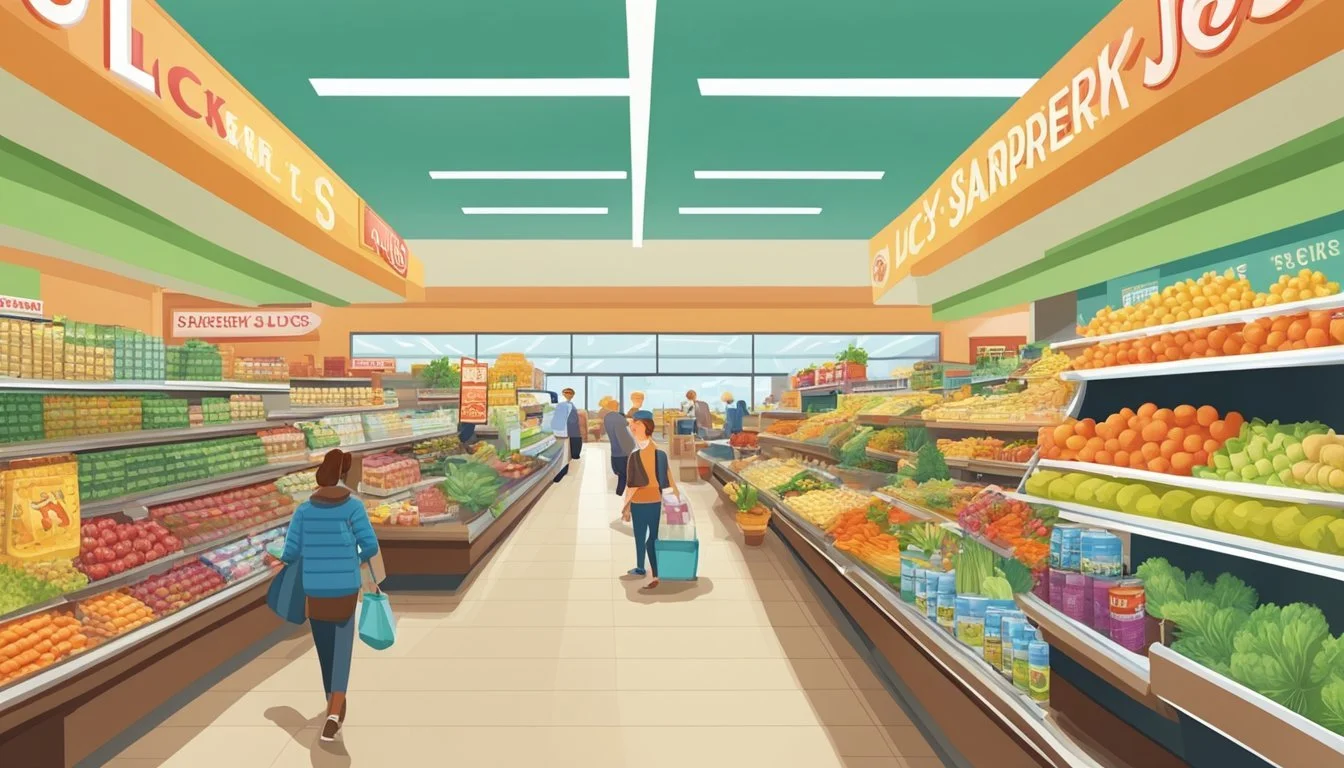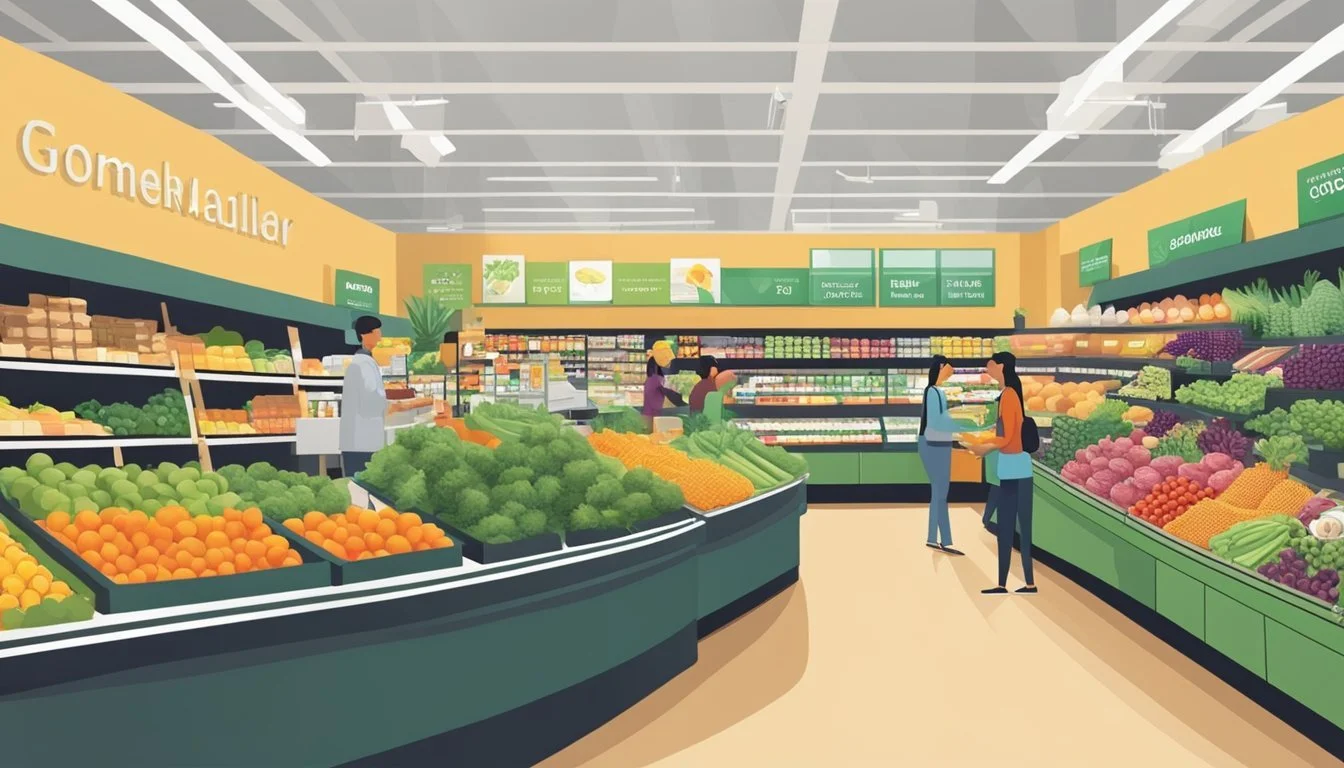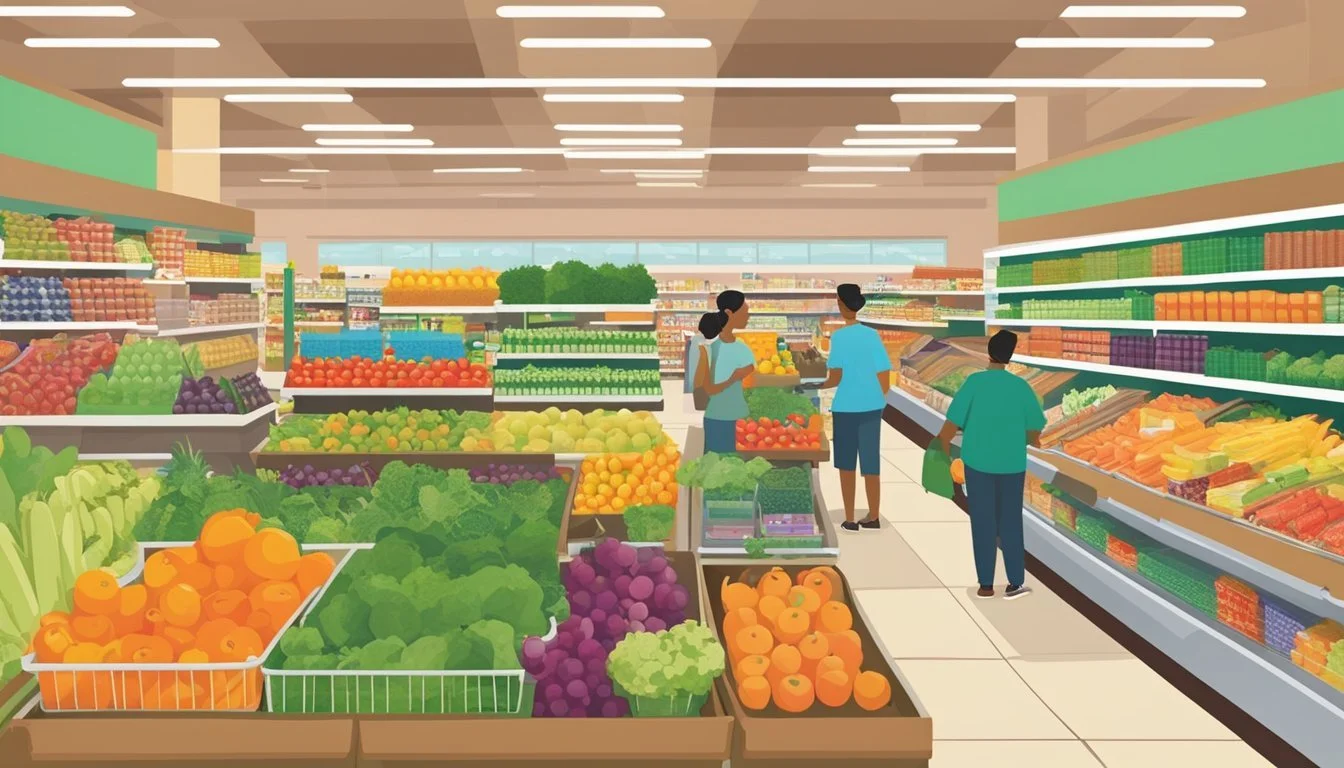Lucky Supermarkets vs Trader Joe's
A Comprehensive Comparison of Price, Quality, and Selection
Grocery shopping is a regular task for most households, and choosing the right store can significantly impact both budgets and meal quality. Lucky Supermarkets and Trader Joe's are two popular options, each with its own unique offerings and shopping experiences.
Trader Joe's generally offers lower prices on many items compared to traditional supermarkets, with savings of up to 33% on a typical grocery list. This price advantage stems from their focus on private-label products and efficient operations. Lucky Supermarkets, on the other hand, provides a more conventional grocery shopping experience with a wider variety of brands and products.
While Trader Joe's excels in affordable specialty items like cheeses, wines, and unique snacks, Lucky Supermarkets often provides more options for everyday staples and fresh produce. The choice between these two stores ultimately depends on individual preferences, shopping habits, and specific product needs.
Company Profiles
Lucky Supermarkets and Trader Joe's are two distinct grocery chains with unique histories and approaches to retail. Both have made their mark on the supermarket industry in different ways.
History of Lucky Supermarkets
Lucky Supermarkets began in 1935 when Charles Crouch opened the first store in San Leandro, California. The chain quickly expanded throughout Northern California in the following decades.
Lucky's innovative self-service format and focus on low prices helped it gain popularity. By the 1980s, Lucky had become one of the largest supermarket chains in California.
In 1998, Albertsons acquired Lucky Supermarkets. The Lucky brand disappeared for several years until 2006 when Save Mart Supermarkets purchased the Northern California division of Albertsons.
Save Mart revived the Lucky name and logo in 2007. Today, Lucky Supermarkets operates over 70 stores in Northern California and Nevada.
History of Trader Joe's
Trader Joe's was founded by Joe Coulombe in 1967 in Pasadena, California. The store began as a convenience store called Pronto Markets but evolved into a unique grocery concept.
Coulombe created Trader Joe's to cater to educated, well-traveled consumers seeking unique, affordable products. The store's nautical theme and friendly staff became hallmarks of the brand.
In 1979, Coulombe sold Trader Joe's to German grocery retailer Aldi Nord. Under new ownership, Trader Joe's expanded beyond California while maintaining its distinct character.
Trader Joe's is known for its private label products, which make up about 80% of its stock. The chain has grown to over 500 stores across the United States.
Store Experience and Layout
Lucky Supermarkets and Trader Joe's offer distinct shopping environments that cater to different preferences. The layout, aesthetics, and conveniences of each store shape the overall customer experience in unique ways.
Navigating the Aisles
Lucky Supermarkets typically feature wider aisles and a more traditional grocery store layout. Departments are clearly marked, making it easy for shoppers to find specific items. The stores often have a logical flow, with produce near the entrance and staples like dairy and bread along the perimeter.
Trader Joe's opts for a more compact design. Their stores average around 15,000 square feet, about a third the size of typical supermarkets. Despite the smaller footprint, Trader Joe's maintains an efficient layout. Products are grouped by category rather than brand, encouraging exploration.
Both stores place high-demand items strategically. Lucky tends to position essentials like milk at the back, while Trader Joe's often showcases popular seasonal items near the entrance.
Aesthetic and Atmosphere
Lucky Supermarkets maintain a clean, bright, and functional aesthetic. The stores use standard overhead lighting and neutral color schemes. Signage is clear and informative, focusing on product details and prices.
Trader Joe's embraces a more whimsical atmosphere. Wooden shelving, hand-painted signs, and themed decor create a distinctive look. The store's layout and design aim to evoke a neighborhood market feel, fostering a sense of discovery.
Lucky's approach prioritizes efficiency, while Trader Joe's cultivates a more engaging, browse-friendly environment. This difference in aesthetic can significantly impact the shopping experience and customer perception of each store brand.
Convenience Features
Lucky Supermarkets often provide amenities typical of larger grocery chains. These may include:
Self-checkout lanes
Wide selection of shopping cart sizes
In-store pharmacies (in some locations)
Dedicated customer service counters
Trader Joe's focuses on streamlining the shopping process. Their convenience features include:
Single line queuing system for faster checkout
Compact store layout for quicker trips
Free samples of new or popular products
Helpful crew members stationed throughout the store
Both chains prioritize customer service, but express it differently. Lucky emphasizes variety and traditional grocery store conveniences, while Trader Joe's aims for a more personal, curated experience.
Product Range and Quality
Lucky Supermarkets and Trader Joe's offer distinct product selections and quality standards. Their approaches to produce, meats, organic options, and store brands cater to different customer preferences and needs.
Produce Section Comparison
Lucky Supermarkets typically feature a larger produce section with a wide variety of fresh fruits and vegetables. They stock both conventional and organic options to suit diverse customer preferences.
Trader Joe's, while having a smaller produce area, focuses on curated selections of high-quality fruits and vegetables. They often offer unique or seasonal items not commonly found in other stores.
Both chains prioritize freshness, but Trader Joe's is known for its pre-packaged produce, which can be convenient but may limit selection flexibility.
Meat and Seafood Options
Lucky Supermarkets generally provide a full-service meat and seafood counter with a broader range of options. Customers can find various cuts of meat, poultry, and fish, often including both budget-friendly and premium choices.
Trader Joe's offers a more limited selection of pre-packaged meats and seafood. However, they emphasize quality and often stock unique or specialty items like pre-marinated meats or sustainably sourced seafood options.
Both stores strive to maintain high standards for their meat and seafood products, but Lucky Supermarkets may appeal more to those seeking variety or specific cuts.
Availability of Organic and Specialized Foods
Trader Joe's has built a reputation for its extensive organic and specialized food offerings. A significant portion of their inventory consists of organic products across various categories.
Lucky Supermarkets have expanded their organic and health-focused options in recent years. They typically offer a dedicated organic section and integrate specialized foods throughout the store.
Trader Joe's excels in unique and international products, often introducing customers to new flavors and ingredients. Lucky Supermarkets provide a mix of mainstream and specialized options to cater to a broader customer base.
Store Brand Quality
Trader Joe's is renowned for its high-quality store brand products, which make up the majority of its inventory. These items often receive praise for their taste, quality, and value.
Lucky Supermarkets offer their own store brands, which provide budget-friendly alternatives to national brands. While perhaps not as celebrated as Trader Joe's offerings, Lucky's store brands still maintain respectable quality standards.
Trader Joe's store brand products frequently feature unique flavor combinations and premium ingredients. Lucky's store brands focus more on providing familiar products at competitive prices.
Both chains prioritize quality control for their store brands, but Trader Joe's has cultivated a stronger reputation in this area.
Pricing and Value
Lucky Supermarkets and Trader Joe's employ distinct pricing strategies that impact overall value for shoppers. Their approaches to everyday pricing, item costs, and special offers shape the grocery experience.
Everyday Pricing Strategies
Lucky Supermarkets follows a traditional supermarket model with regular prices and weekly sales. They offer a mix of national brands and store-brand alternatives at varying price points. Lucky's loyalty program provides additional savings for members.
Trader Joe's takes a different approach. They maintain consistent low prices on most items year-round, with minimal sales or coupons. Trader Joe's focuses on their own private label products, allowing them to cut costs and offer lower prices on many items.
Cost Comparison of Common Items
A basket of common grocery items often costs less at Trader Joe's compared to Lucky Supermarkets. Studies indicate Trader Joe's prices can be 10-20% lower than average supermarket prices on many products.
Item Lucky Trader Joe's Milk (1 gal) $3.99 $3.29 Eggs (1 dozen) $3.49 $2.99 Bread $2.99 $2.49
Trader Joe's tends to have better prices on specialty items, organic produce, and frozen foods. Lucky may offer lower prices on some national brands and sale items.
Special Deals and Discounts
Lucky Supermarkets runs weekly sales, digital coupons, and "buy one, get one" promotions. Their loyalty program provides personalized deals and gas rewards. Lucky also price matches competitors' advertised deals.
Trader Joe's rarely offers sales or coupons. Instead, they introduce new products at low introductory prices and may occasionally discount seasonal items. Their "Fearless Flyer" highlights featured products but doesn't typically include special pricing.
Lucky's approach benefits shoppers who enjoy hunting for deals and stocking up during sales. Trader Joe's consistent pricing appeals to those who prefer straightforward shopping without comparing ads or clipping coupons.
Brand Perception and Customer Loyalty
Lucky Supermarkets and Trader Joe's have distinct brand images that shape customer perceptions and loyalty. Market research and customer reviews provide insights into how these grocery chains are viewed by shoppers.
Market Research Findings
Lucky Supermarkets positions itself as a neighborhood grocery store offering competitive prices and fresh produce. It appeals to budget-conscious shoppers and families looking for everyday essentials.
Trader Joe's, on the other hand, has cultivated a unique brand identity centered around specialty products and a curated selection. Its focus on private-label items and exotic flavors attracts food enthusiasts and health-conscious consumers.
Survey data indicates that Trader Joe's enjoys stronger brand recognition nationally compared to Lucky Supermarkets, which has a more regional presence. Trader Joe's also scores higher in customer satisfaction ratings across various grocery store chains.
Customer Reviews and Ratings
Online ratings consistently show Trader Joe's outperforming Lucky Supermarkets. On popular review sites, Trader Joe's typically receives 4-5 star ratings, while Lucky Supermarkets averages 3-4 stars.
Customers praise Trader Joe's for:
Unique product offerings
Friendly staff
Affordable prices on specialty items
Lucky Supermarkets receives positive feedback for:
Local produce selection
Convenient locations
Weekly deals and promotions
Trader Joe's has built a loyal following, with many customers describing themselves as "die-hard fans." This passionate customer base contributes to word-of-mouth marketing and repeat business.
Lucky Supermarkets maintains a steady customer base but lacks the cult-like status of Trader Joe's. Its loyalty programs and community involvement help foster customer retention in its operating areas.
Additional Services and Amenities
Lucky Supermarkets and Trader Joe's offer unique services beyond basic grocery shopping. These extras enhance the customer experience and provide added convenience for shoppers.
Grocery Delivery and Pickup Options
Lucky Supermarkets partners with Instacart for home delivery and curbside pickup. Customers can shop online or through the Instacart app, selecting items for same-day delivery or pickup at their local Lucky store.
Trader Joe's does not offer official delivery or pickup services. Some third-party services may deliver Trader Joe's products in certain areas, but these are not affiliated with the company. Trader Joe's focuses on the in-store experience.
Prepared Foods and Bakery
Lucky Supermarkets features a deli counter with hot and cold prepared foods. Shoppers can find rotisserie chickens, sandwiches, salads, and other ready-to-eat options. The bakery department offers fresh bread, cakes, and pastries daily.
Trader Joe's is known for its extensive selection of unique prepared foods. The store stocks a wide variety of frozen meals, fresh salads, wraps, and heat-and-eat options. Trader Joe's bakery section includes artisanal bread, cookies, and seasonal baked goods.
In-store Events and Samples
Lucky Supermarkets occasionally hosts in-store events like cooking demonstrations or local product showcases. Free samples are sometimes available at various departments.
Trader Joe's is famous for its liberal sampling policy. Customers can typically sample any product in the store upon request. Many locations offer daily coffee samples and feature a tasting station with rotating food items. Trader Joe's does not typically host formal events but focuses on creating an engaging shopping atmosphere.
Sustainability and Community Engagement
Lucky Supermarkets and Trader Joe's both implement sustainability practices and engage with their local communities. Their approaches differ in scale and focus, reflecting each company's unique values and business models.
Environmental Initiatives
Lucky Supermarkets has made strides in reducing its environmental impact. The chain has implemented energy-efficient lighting and refrigeration systems in many stores. They also offer reusable bags and encourage customers to bring their own containers for bulk items.
Trader Joe's has taken a more comprehensive approach to sustainability. The company has committed to reducing plastic packaging and eliminating harmful chemicals from their products. They've also increased their use of renewable energy in stores and distribution centers.
Both retailers have implemented recycling programs, but Trader Joe's has gone further by setting specific waste reduction targets.
Support for Local Producers
Lucky Supermarkets emphasizes partnerships with local farmers and producers. They feature locally-grown produce and artisanal products prominently in their stores. This approach supports regional economies and reduces transportation-related emissions.
Trader Joe's, while known for its private label products, also sources from local suppliers when possible. They work with small-scale producers to develop unique items that align with their brand.
Both stores offer organic options, but Trader Joe's has a wider selection of affordable organic products. Lucky Supermarkets focuses more on conventional locally-sourced items, with a growing organic section.
Conclusion
Lucky Supermarkets and Trader Joe's offer distinct grocery shopping experiences with unique strengths and weaknesses. Each store caters to different customer preferences and priorities.
Summary of Findings
Lucky Supermarkets provides a traditional supermarket experience with a wide selection of national brands and frequent sales. The store offers competitive prices on everyday items and a familiar layout for shoppers.
Trader Joe's, in contrast, focuses on its private label products and curated selection. The store is known for unique, often healthier options and a more compact shopping environment.
Lucky tends to have lower prices on staple goods and household items. Trader Joe's excels in specialty products, prepared foods, and organic options.
Customer service experiences can vary between locations for both chains. Trader Joe's generally receives praise for its friendly staff and efficient checkout process.
Final Verdict on the Better Grocery Store
The better grocery store depends on individual shopper needs and preferences. Lucky Supermarkets may be the winner for those seeking a one-stop shop for all household needs and brand-name products.
Trader Joe's takes the lead for shoppers prioritizing unique flavors, organic options, and a curated shopping experience. The store's overall quality of private label products is often rated highly by consumers.
Budget-conscious shoppers might find better deals at Lucky, especially with sales and loyalty programs. However, Trader Joe's offers competitive pricing on many specialty items.
For the health-conscious, Trader Joe's provides a wider range of organic and alternative options. Lucky Supermarkets typically offers a more extensive produce section.

